- Established 1982 -HOME: www.hiltonpond.org
THIS WEEK at HILTON POND Subscribe for free to our award-winning nature newsletter (Back to Preceding Week; on to Next Week) |
BIRDS AND BUGS Yes, it's spring at Hilton Pond Center, what with the April arrival of Neotropical warblers, Ruby-throated Hummingbirds, and . . . the year's first Pine Siskin. Huh? A siskin?
All text, maps, charts & photos © Hilton Pond Center Across the eastern U.S., last year was a huge one for Pine Siskins (PISI). Here at the Center we banded an unprecedented 1,316 of them during the winter of 2020-21, almost twice as many as our previous high of 780 and a magnitude greater than our 40-year seasonal average of 115 PISI. Typically, a Pine Siskin irruption winter is followed by a down year, so we weren't expecting to see ANY PISI during 2021-22. How odd it was for our ONLY Pine Siskin (above) of the current "winter" to show up in a trap this week on 12 April. eBird (the on-line worldwide database of bird sightings) shows only five PISI observations this entire winter for York County SC where we're located--the most recent in early March 2022. Thus, this week's bird was late showing up at Hilton Pond AND late to head back toward breeding grounds in boreal Canada (or maybe out west). That said, we've had PISI at the Center as late as 5 May (back in 1984); during the big 2020-21 irruption we banded our final siskin on 26 April. All text, maps, charts & photos © Hilton Pond Center PINK-BILLED SPARROW We often hear from novice birders lamenting their difficulty with identifying "confusing fall warblers" that "all look alike." We try to explain if you take these warblers two or three at a time and compare field marks, they're really not so similar after all. With practice you can figure them all out. Same goes for the LBJs ("Little Brown Jobbers")--those secretive, bush-dwelling, streaked sparrows that seem similar, but only superficially. Again, careful attention to ALL a sparrow's field marks makes identification lots easier than it seems at first.
All text, maps, charts & photos © Hilton Pond Center This week at the Center we captured one of the easiest of the LBJs to identify--due to a conical bill that comes in distinctive pink. It's the Field Sparrow (FISP, above), whose other external traits include an unstreaked rusty crown and ear patch, gray face, and white eye ring. A pair of white wing bars is also noticeable in full-body view (below).
All text, maps, charts & photos © Hilton Pond Center FISP are sometimes confused with Chipping Sparrows (CHSP, below, also banded this week) that likewise have rusty caps, but CHSP sport a prominent white superciliary line and a black line through they eye--plus an upper mandible that is black.
All text, maps, charts & photos © Hilton Pond Center Pink-billed FISP breed in most of the U.S. east of the Rockies--including at Hilton Pond Center, where we've not found a nest but did capture a few females with active brood patches. Although Chipping Sparrows breed here, too, they are ten times more common locally than Field Sparrows. In fact, over 41 years of study CHSP are our eighth most-commonly banded avian species with 2,517, compared to just 297 FISP. Most years we band no Field Sparrows at all. All text, maps, charts & photos © Hilton Pond Center OPPORTUNISTIC WRENS This past Christmas the Hilton family journeyed off to North Carolina's Blue Ridge Mountains to select and cut a nine-foot Fraser Fir on which to hang our many nature-related ornaments. The freshly harvested tree lasted well into January, filling the old farmhouse with a delightful seasonal aroma. (No cedars, pines, or artificial trees for us!) When we paid for the tree, the kindly clerk offered us a free wreath made from leftover fir boughs, which we brought home to Hilton Pond and hung on our big front porch. We liked the wreath's looks and--unlike after previous holidays--decided to leave it hanging for spring. You might know one of our resident Carolina Wren pairs would abandon the wooden box they've used the past two years and build instead in the now-dry wreath.
All text, maps, charts & photos © Hilton Pond Center The hen wren has been sitting on five eggs since the end of the first week in April, occasionally peeking out of her comfy cavity with one eye (above) beneath a white eyebrow. We've minimized entering and exiting the farmhouse front door, but even when we use it the wren almost always sits tight--fortunate behavior during unusually cold nighttime temperatures in the mid-30s in the middle of April. Since the wreath hangs high enough to be out of mammalian predator reach we suspect this Carolina Wren couple (both banded) will bring off yet another successful brood. The pair usually double-clutches at Hilton Pond Center, so it will be interesting to see if and where a follow-up nest gets built after the first chicks fledge. All text, maps, charts & photos © Hilton Pond Center DOWN IN THE PAWPAW PATCH About ten years ago we noticed several unfamiliar plants sprouting on the far slope of the dam that forms Hilton Pond. They were woody and near the ends of branches produced big alternate, oblong or ovate leaves (below) about 10" long and 3" wide; leaves were simple, pale green and with smooth edges, short petioles, and no lobes. Pinnate veins were prominent, giving each leaf a wrinkly look. We suspected these were one of the Pawpaws, Asimina spp., and confirmed our identification after consulting several field guides.
All text, maps, charts & photos © Hilton Pond Center Each year after that we found new Pawpaws sprouting at various spots around the Center's 11 acres--even in a little wooded patch right behind the old farmhouse--so it was apparent Pawpaw shrubs somewhere nearby were making lots of fruit and that birds and mammals were disseminating seeds. We've always wanted to sample this tasty wild food that has an almost mythical reputation in the South but never came across a local shrub bearing fruit. In fact, although some of our Pawpaws were 8-10' tall, we couldn't even find one with flowers. Finally, this week--after a decade of searching--we located an elusive Pawpaw flower (below), hanging under a twig on that first plant that sprouted years ago on Hilton Dam.
All text, maps, charts & photos © Hilton Pond Center Pawpaw flowers are quite distinctive and instantly recognizable by their pendulous, 1-2" bell-like shape and six purplish-brown petals. (Several Pawpaw species occur in the Carolinas; relatively wide petals on the specimen we found indicate our shrubs are Asimina triloba.) Flowers are perfect (bearing both pistil and stamens) but are protogynous, meaning male and female parts mature at different times--thus avoiding self-pollination by flies and beetles. (It's not surprising with those kinds of pollinators the Pawpaw flower smells faintly of carrion.) Each flower typically contains several ovaries, so fruit from just one blossom often forms in a cluster of 2-5. Pawpaw fruit is slow growing--it doesn't ripen until fall--and since we didn’t see any insects flying about we couldn't tell if the flower we found was being pollinated and might be productive. Several other flowers on the same shrub were shriveled, suggesting they had opened at least a week before. Therein lies the likely explanation for why we'd never seen a local Pawpaw flower: We just hadn't starting searching early enough in spring. Now we know when to look and where to watch for developing fruit on our very own Pawpaws around Hilton Pond. (Stay tuned!) All text, maps, charts & photos © Hilton Pond Center TENTING AT HILTON POND Come spring and just as bud-burst begins, Black Cherries, Prunus serotina, at Hilton Pond Center can be identified from afar--even though they have no leaves. The reason: These larvae have just hatched after spending winter in a hard brown egg case deposited last summer on the cherry tree. After hatch they instinctively collaborate--sometimes with larvae from other egg masses--to build a tent with silk spun from glands on their heads. They enlarge this predator-resistant home as they themselves grow rapidly, nourished by fresh, tender leaves on their host tree. Frequently a Black Cherry will host several tent colonies that literally strip its foliage; this seldom hurts the tree that responds with new leaf-buds after the ravenous caterpillars have turned into adult moths that do not eat. All text, maps, charts & photos © Hilton Pond Center (Click on image above for a more detailed version.) Eastern Tent Caterpillars are up to 2" long and can be so plentiful stepping on a few can't be avoided as we travel the trails around Hilton Pond. In close view (above), the larvae are quite eye-pleasing, covered by protective (but non-venomous) long hairs and with a body marked in an intricate blue, white, and orange tapestry pattern. Eastern Tent Caterpillars are kept in check in part by tiny parasitic wasps that lay eggs on them. These hatch, after which wasp larvae consume the moth larva's juicy innards. The old story that nothing eats tent caterpillars except Yellow-billed Cuckoos is apparently a myth, since many bird species are known to partake--including American Robins, Blue Jays, Red-winged Blackbirds, and Northern Cardinals. Tent caterpillars are also suitable fare for everything from lizards to Eastern Garter Snakes and White-footed Mice to Eastern Chipmunks. All text, maps, charts & photos © Hilton Pond Center CATERPILLARS AIN'T "WORMS" Just as Eastern Tent Caterpillars are not actually "worms," several spring migrant warblers have misleading names. There's the Magnolia Warbler that nests not in Southern Magnolias but in spruce forests across boreal Canada. Palm Warblers? About the same. There are Tennessee Warblers and Nashville Warblers, both of which pass briefly through the Volunteer State before crossing the U.S. northern border to breed. And then there's the Worm-eating Warbler (WEWA), which don't eat no worms.
All text, maps, charts & photos © Hilton Pond Center In fact, Worm-eating Warblers use long, straight bills to grab all sorts of non-wormy invertebrates, including spiders, insects and their larvae, an occasional slug from the forest floor, and--oh, yes, those abundant Eastern Tent Caterpillars mentioned above. And WEWA don't even look like most warblers, which typically are brightly colored with at least a touch of yellow. Instead, the Worm-eating Warbler is one of those stealthy ground-dwelling brown parulids that include the two waterthrushes, Ovenbirds, and Swainson's Warblers. Although WEWA plumage is basically olive-brown (above), the species is immediately identifiable if you get a view of its tan-colored head (below). Four prominent black stripes--one through each eye and two on the crown--are distinctive. The only confusion might be with the chunkier, tail-bobbing Ovenbird, which has a rusty patch between its crown stripes.
All text, maps, charts & photos © Hilton Pond Center Worm-eating Warblers are more southerly in breeding habits than most Neotropical parulids. After wintering in Central America and the Caribbean, they fly only as far north as the southeastern and mid-Atlantic states and breed sparingly in the Carolinas. The species is quite scarce at Hilton Pond Center; we've banded just 56 here in 41 years, but three this week! All text, maps, charts & photos © Hilton Pond Center EARLY FIREFLIES At 8:45 p.m on 16 April we saw our first Lightning Bugs of the season for Hilton Pond Center--rather early by our records. (Incidentally, Lightning Bugs, aka Fireflies, are actually beetles. In the photo below you can see the beetle's typical hard, non-membranous forewings, aka elytra.)
All text, maps, charts & photos © Hilton Pond Center What could bring more joy than watching these insects flashing signals on a spring or summer evening? Unfortunately, we humans and our unreasonable desire for manicured lawns have led to Lightning Bug declines worldwide. Fertilizers and pesticides kill larval Fireflies in the soil where they dine on slugs, snails, worms, and other invertebrates--the very organisms that actually DO harm lawn grasses. And, of course, indiscriminate insecticides grossly overused around the yard kill adult Lightning Bugs as well. Oh, what fools we mortals be . . . . Up With Fireflies! Down With Lawns! All text, maps, charts & photos © Hilton Pond Center HILTON POND SUNSETS "Never trust a person too lazy to get up for sunrise
All text, maps, charts & photos © Hilton Pond Center Sunset over Hilton Pond, 13 April 2022 In the light of the setting sun, it looks like green-up is now in full swing at Hilton Pond Center. Don't forget to scroll down for lists of Hilton Pond supporters and of all birds banded and recaptured during the period. Photoshop image post-processing for this page employs |
|---|
|
"This Week at Hilton Pond" is written and photographed by Dr. Bill Hilton Jr., executive director of Hilton Pond Center for Piedmont Natural History
|
|
|
Please refer "This Week at Hilton Pond" to others by clicking on this button: |
|

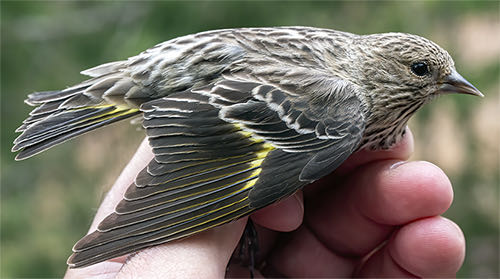
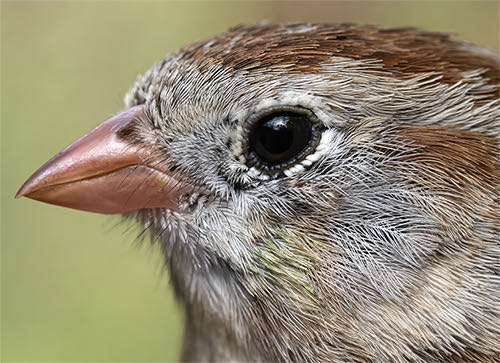


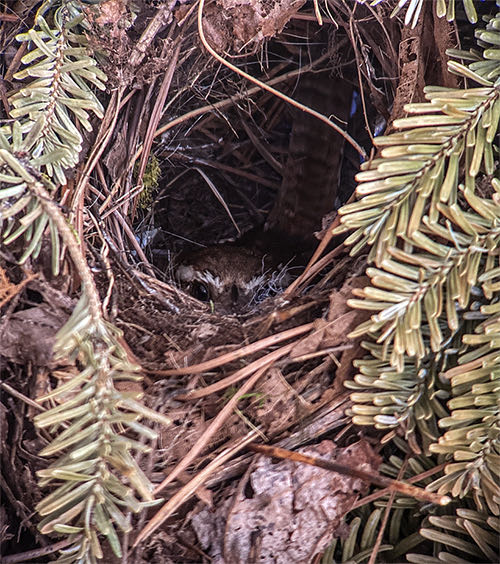
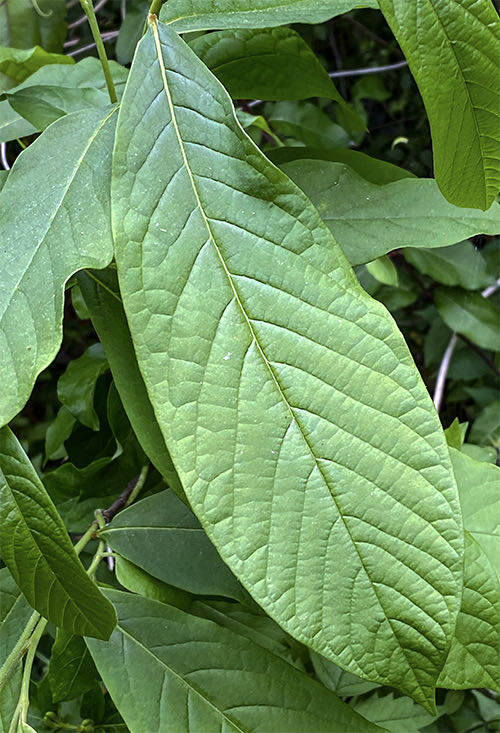
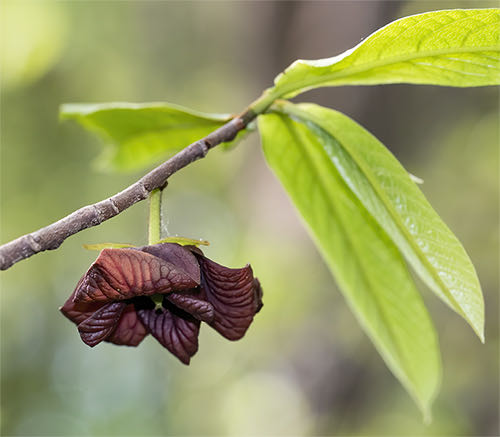
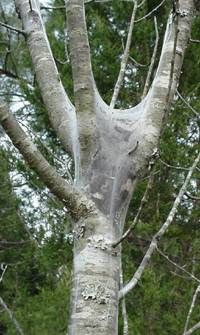 At least one main crotch on each tree will contain a big ghostly mass
At least one main crotch on each tree will contain a big ghostly mass 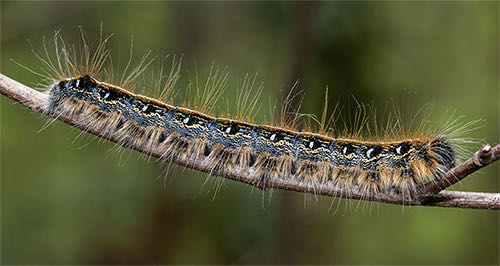
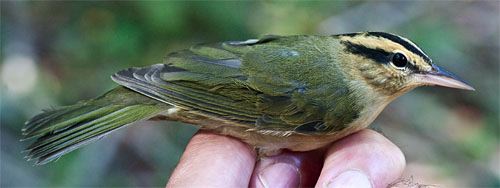
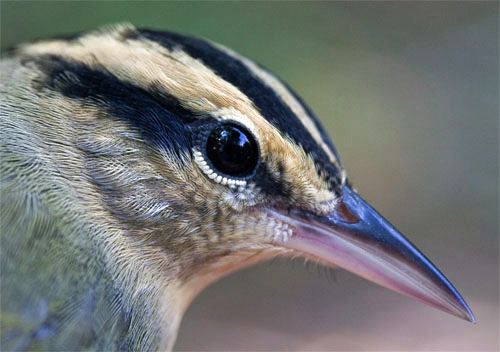
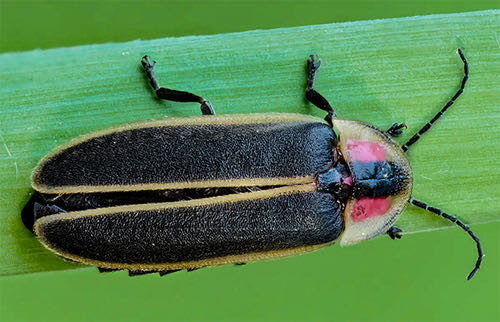
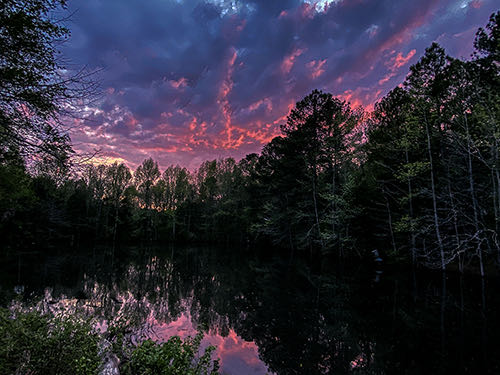









 Please report your
Please report your